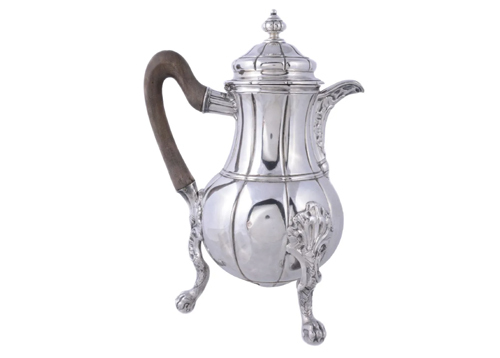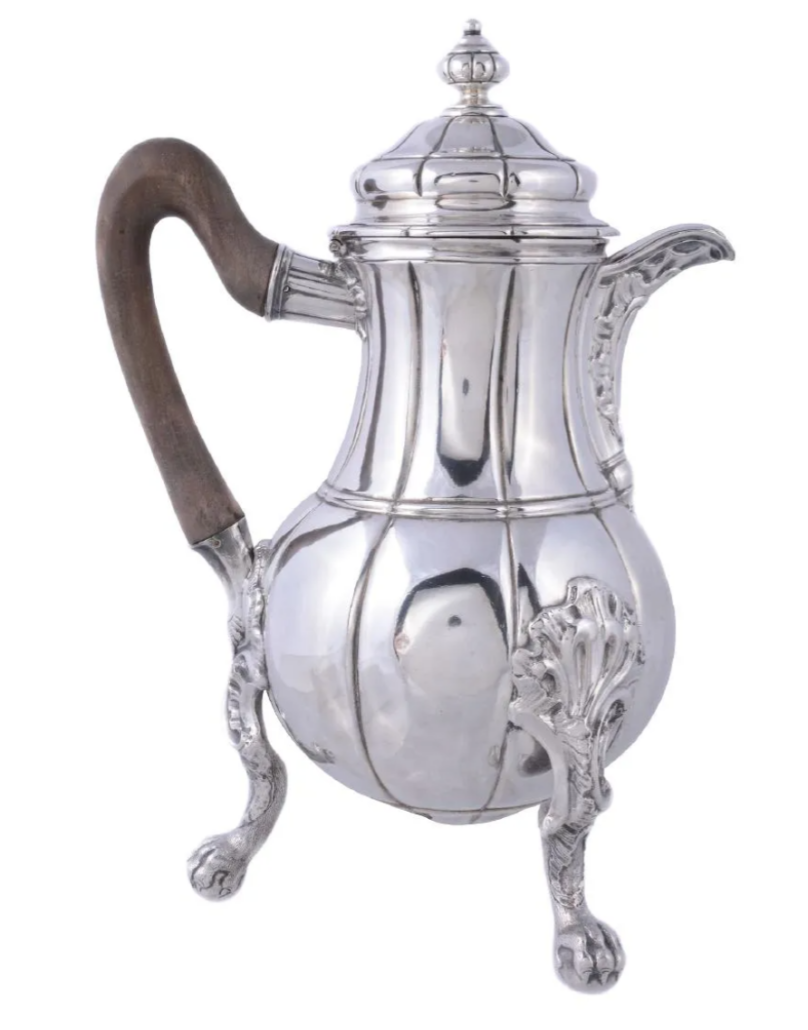
NEW YORK — Chocolate has been a delicacy for centuries, enjoyed around the world in a range of treats, from truffles to pudding to cookies and cakes. Its simplest and most enjoyable form is also its earliest: a hot drink. Fine dining demands all manner of specialized serving pieces, so, unsurprisingly, a canny silversmith designed the chocolate pot, a vessel exclusively for melting and serving chocolate.
By the late 17th century, drinking chocolate in coffee and cocoa houses — where businessmen would gather to set prices and make important decisions — became fashionable. English silversmith George Garthone is widely credited with creating the first known chocolate pot, dating to 1685.
Making traditional hot chocolate is different from boiling coffee grounds in water, though both beverages start with beans grown in tropical regions. Hot chocolate calls for dissolving ground cacao beans in hot water, adding milk, sugar and spices. Because the mixture is prone to dissolving unevenly, a special stick known as a molinet is used to keep the mixture milky and rich and prevent the chocolate from clumping.
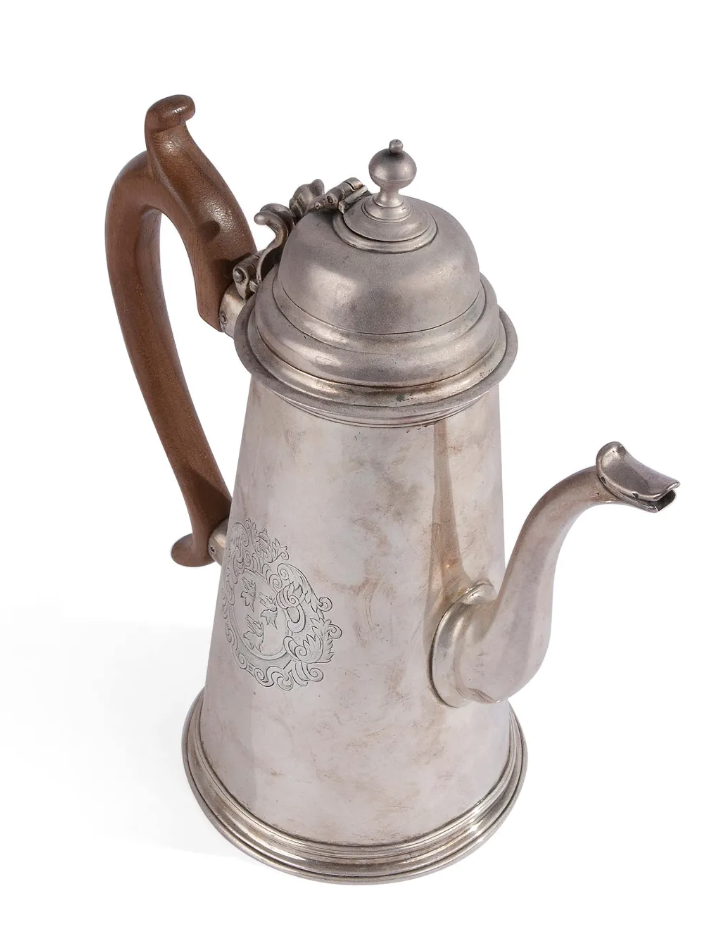
To the untrained eye, chocolate pots can appear very similar to coffee pots. Chocolate pots tend to be tall and slender, and the finial on the lid usually has a hole on the top for inserting the molinet to stir the chocolate. Lids are often deeper on chocolate pots as well, and the pitcher-like spout usually is placed near the top of the lid, but not always. An example of an exception is a 1714 Queen Anne-style silver chocolate pot made in London that achieved $7,013 plus the buyer’s premium in December 2021 at Telearte. It has a swan-neck lidded spout sitting low on its body.
There is a great variety in regional differences in chocolate pots in terms of decoration: Asian examples (as well as European vessels made in the Oriental style) often featured ornate and gilded chinoiserie decoration, while Bavarian ones commonly had floral designs. English chocolate pots ranged from those that sported simple engraving and chasing to highly detailed decoration.
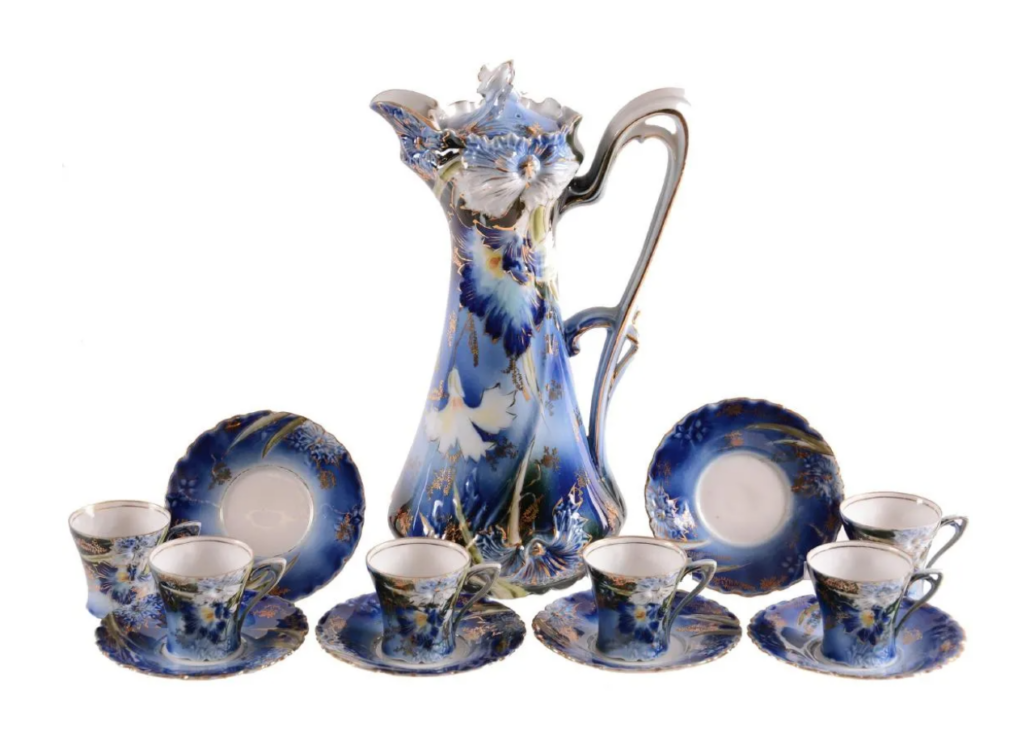
A chocolate set in a cobalt blue color with stylized carnation decoration is evocative of the Bavarian taste. Unmarked, but fashioned in the style of the R.S. Prussia wares made in Germany from the late 1800s through World War I, the set sold for $10,000 plus the buyer’s premium in May 2018 at Woody Auction. It included a 11 ¾in chocolate pot as well as six demitasse cups and saucers.
Silver chocolate pots were prevalent in England and Europe. A mid-18th-century Belgian large silver chocolate pot by Jacobus van de Vyvere sold for $5,204 plus the buyer’s premium in March 2017 at Dreweatts Donnington Priory. Having a baluster form, the 12 ½in-tall pot was constructed with a screw-off lobed ball finial to the ogee domed and paneled cover, and it had a looped wood handle. Graced with an elegant, simple design, the pot has rocaille work on the spout, ball-and-claw feet and a paneled body that repeats the lid decoration.
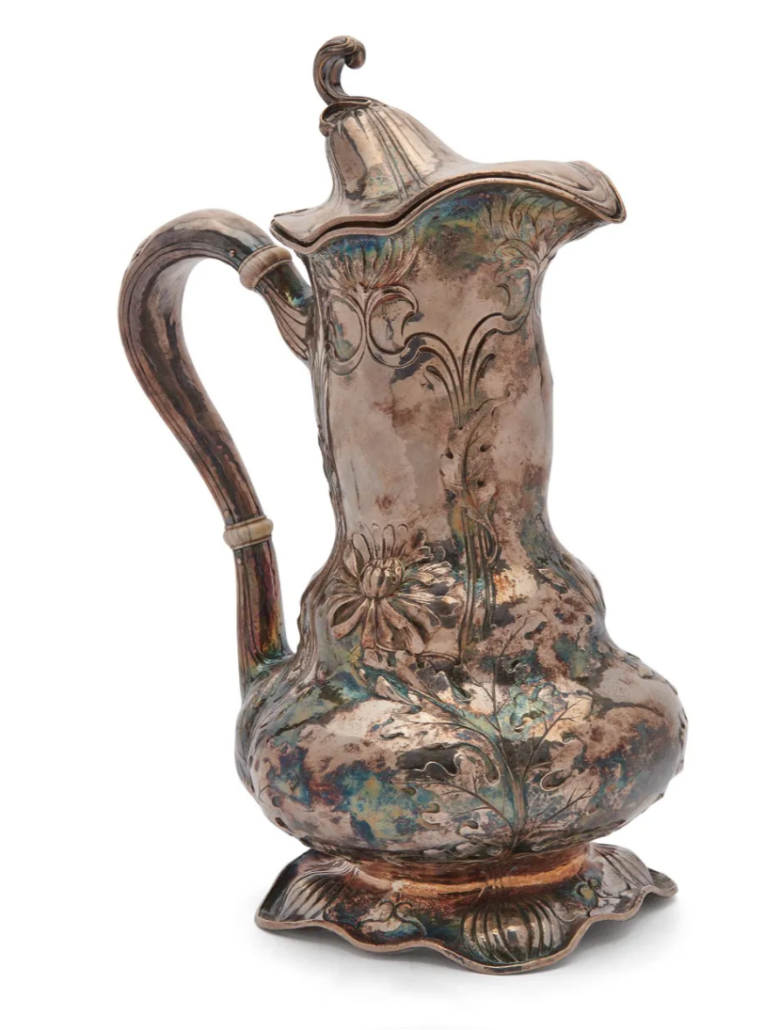
Chocolate pots aimed at affluent buyers were frequently ornate in their decoration. A perfect example is a Gorham Martele silver chocolate pot, standing 10in tall and festooned with hand-chased all-over floral decoration. It realized $5,500 plus the buyer’s premium in December 2021 at Grogan & Company. Then and now, Martele wares represent Gorham’s most desirable pieces; each was laboriously handmade in the old silversmithing tradition, from the raising of the piece to the chasing and engraving. A note accompanying the sale of the above-mentioned pot notes it took 50 hours to make and another 31 hours to chase, and was a special order finished in February 1906 that cost its owner $120, or roughly $3,700 in modern dollars. The term Martele comes from the French word to hammer (marteler), and these pieces flaunt evidence of the hand-hammering that produced their decorations.
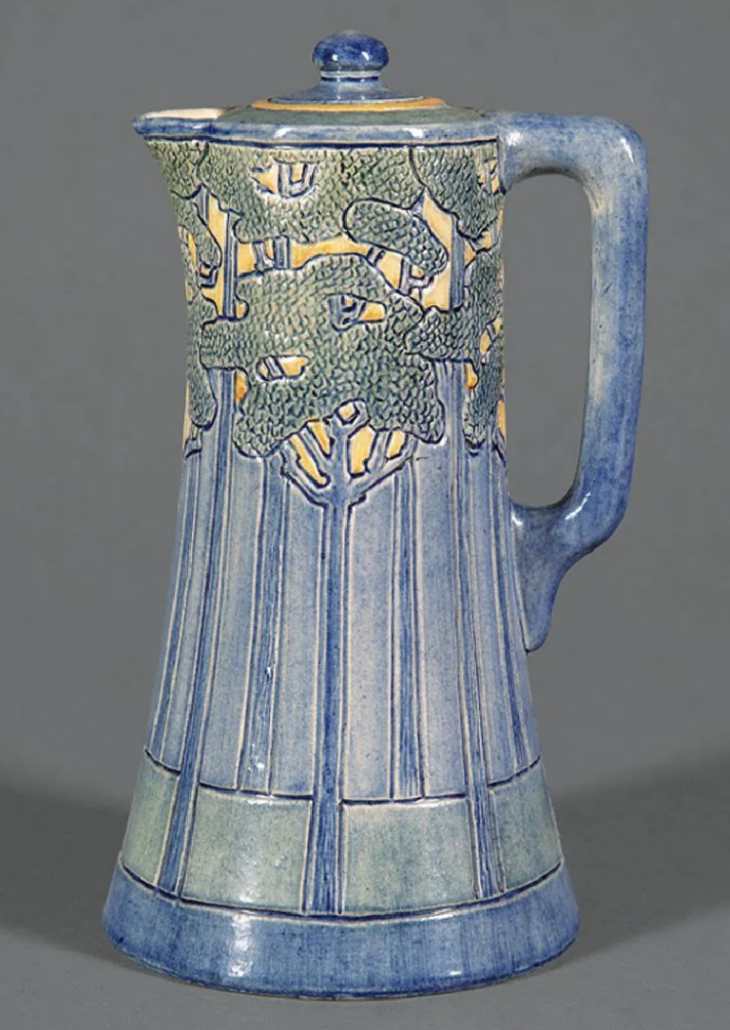
In the Art Nouveau era, chocolate pots continued to be desirable even as tea was largely replacing chocolate as the preferred drink. A circa-1907 Newcomb College art pottery high glaze chocolate pot earned $4,750 plus the buyer’s premium in November 2018 at Neal Auction Company. Decorated by Marie Levering Benson, the 10in-tall pot features an incised pine tree motif and lines.
The advent of the cocoa press in 1828 made cocoa powder available and affordable to many, initiating a slow decline in demand for chocolate pots. Nonetheless, their craftsmanship and their shapely forms continue to appeal to collectors today. Antique chocolate pots not only look beautiful on display but remain useful for brewing tea. They’re also perfect for the gourmet who goes the extra mile and grinds cacao nibs to make homemade hot chocolate the old-fashioned way.


